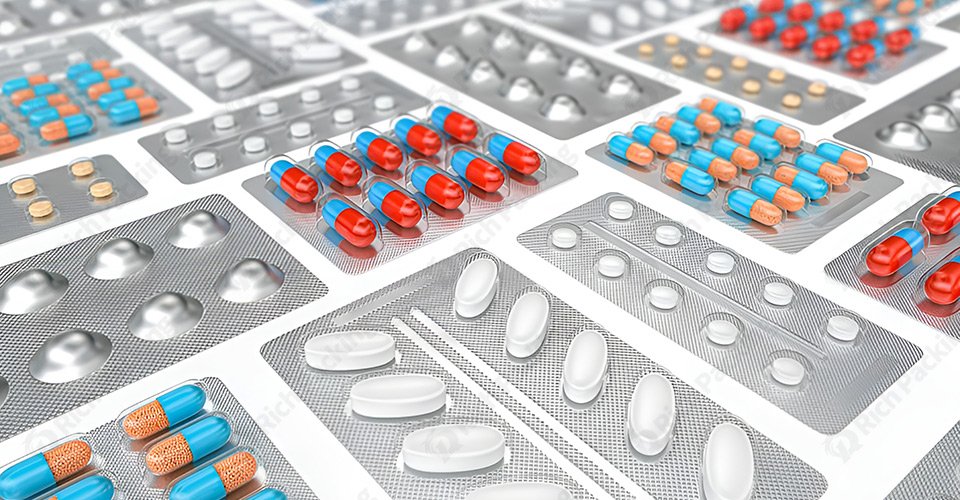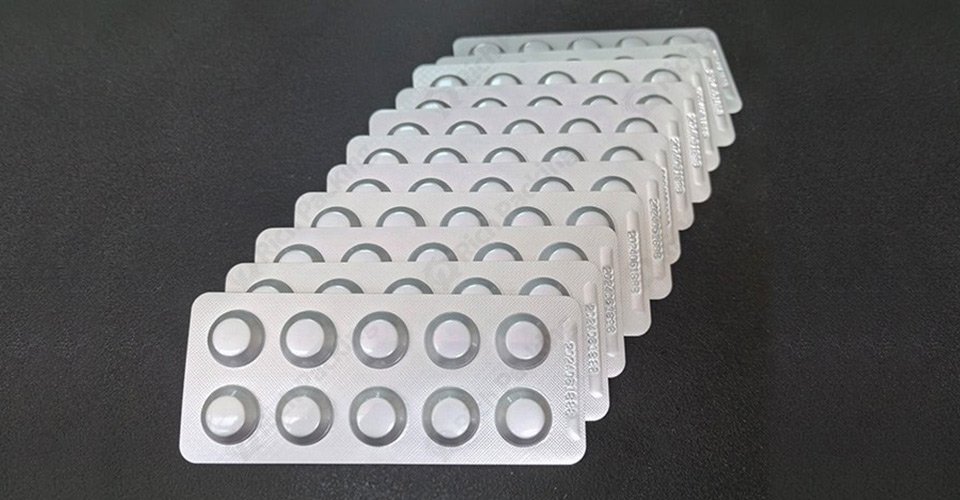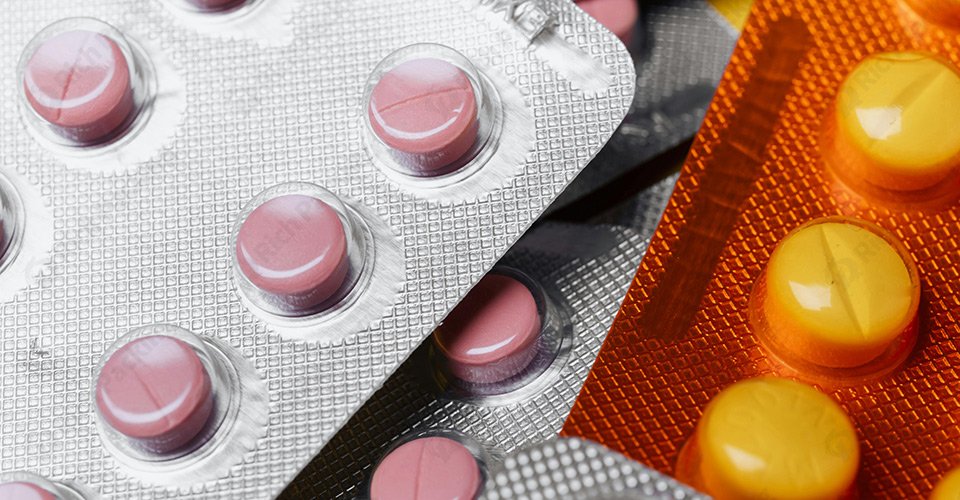When it comes to pharmaceutical packaging, choosing the right type of blister packaging is crucial for ensuring your products' safety, stability, and shelf life. Two of the most commonly used types are Alu-Alu and Alu blister packaging. While they may seem similar at first glance, they differ significantly in terms of materials, protection levels, cost, and applications. Understanding these differences will help you make an informed decision for your business, especially when it comes to packaging sensitive medications or products that require specific barrier properties.
In this article, we will break down the key differences between Alu-Alu and Alu blister packaging, explain their benefits and disadvantages, and help you decide which option is best for your product needs.

Alu-Alu packaging is a premium packaging solution that uses two layers of aluminum—one for the base and one for the lid. This makes it ideal for packaging products that require maximum protection from environmental factors like light, oxygen, and moisture. Alu-Alu packaging is typically used for drugs that are highly sensitive to these elements, such as biotech products, anti-cancer medications, and other life-saving drugs.
· Total Barrier Protection: Since both the base and lid are made of aluminum, the product inside is fully protected from light, moisture, and oxygen—factors that can degrade the quality of pharmaceutical products.
· Opaque Design: The opaque nature of the aluminum prevents light from entering the blister, ensuring the integrity of sensitive medications.
· Longer Shelf Life: Because of its superior protection, Alu-Alu packaging extends the shelf life of highly sensitive drugs, making it ideal for international shipping and storage in varied environmental conditions.
Alu-Alu packaging is best suited for:
· Biotech Drugs: Sensitive biologics or injectable medications.
· Cancer Treatments: Drugs requiring absolute protection due to their delicate composition.
· Life-Saving Drugs: Pharmaceuticals that cannot afford degradation over time.

Alu blister packaging, on the other hand, involves a combination of plastic (usually PVC or PVDC) for the base and aluminum foil for the lidding. This packaging style offers a partial barrier to moisture, oxygen, and light, making it a more affordable option for many pharmaceutical products.
· Partial Barrier Protection: The combination of plastic and aluminum provides protection, but not to the same degree as Alu-Alu. While the aluminum foil keeps out moisture and light, the plastic base offers less barrier protection against oxygen.
· Transparency: The plastic base of Alu blister packaging is typically transparent, which allows consumers to see the product inside. This is a feature that many manufacturers prefer for over-the-counter (OTC) drugs and supplements.
· Cost-Effective: Compared to Alu-Alu, Alu blister packaging is much more affordable, making it a great choice for mass-market products that do not require as much protection.
Alu blister packaging is commonly used for:
· OTC Medications: Over-the-counter drugs that do not require the same level of protection as prescription medications.
· Vitamins and Supplements: Products that benefit from visibility and a reasonable shelf life.
· General Pharmaceuticals: Medications that are stable enough to withstand standard barrier protection.
· Alu-Alu: Uses two layers of aluminum (base and lid).
· Alu Blister: Uses a plastic base (PVC or PVDC) combined with an aluminum foil lid.
· Alu-Alu: Offers complete barrier protection, ensuring the integrity of highly sensitive products.
· Alu Blister: Provides a partial barrier, sufficient for less sensitive products but not ideal for those requiring high protection.
· Alu-Alu: Generally more expensive due to the use of two aluminum layers and the higher level of protection it offers.
· Alu Blister: More cost-effective and widely used in products that do not require as much protection.
· Alu-Alu: Typically opaque, so consumers cannot see the product. This is a disadvantage if visibility is important.
· Alu Blister: Transparent base allows consumers to view the product, enhancing brand visibility and consumer trust.
· Alu-Alu: Ideal for highly sensitive pharmaceuticals, including biologics and life-saving drugs.
· Alu Blister: Best for OTC medications and vitamins, products that don’t require maximum protection.

· Superior Protection: It provides the highest level of protection for sensitive medications.
· Longer Shelf Life: Reduces the risk of degradation, extending the product’s usable life.
· Ideal for Extreme Conditions: Suitable for long-term storage and shipping in challenging climates.
· Higher Cost: Due to the materials and the level of protection, Alu-Alu packaging is more expensive.
· Lack of Visibility: The opaque nature of the packaging means consumers cannot view the product, which might be less appealing for certain products.
· Cost-Effective: It is a more affordable packaging solution for mass-produced products.
· Transparency: Consumers can easily see the product inside, building trust and enhancing brand visibility.
· Customizable: It offers more options in terms of design and product visibility.
· Limited Protection: It does not offer the same level of protection as Alu-Alu packaging.
· Shorter Shelf Life: Products in Alu blister packs may have a shorter shelf life compared to those in Alu-Alu.
Selecting the right type of packaging for your product depends on several factors, including:
· If your product is highly sensitive to light, moisture, or oxygen, Alu-Alu is the way to go. It provides the ultimate protection.
· For products that are less sensitive or have a longer shelf life under standard conditions, Alu Blister can be sufficient.
· If cost is a concern and your product doesn’t require extreme protection, Alu Blister offers a more economical option.
· Alu Blister packaging’s transparency can be beneficial if you want to showcase your product and build consumer trust.
· Consider the environmental conditions in which your product will be stored or shipped. If the product needs to be transported over long distances or stored in extreme conditions, Alu-Alu packaging is a better choice.
Investing in an advanced blister packaging machine is crucial for ensuring the consistency, quality, and efficiency of your packaging process. With the right machine, you can enhance your production speed, reduce waste, and meet the strict standards required in the pharmaceutical industry.
The DPP-270max High-Speed Packing Blister Machine is an excellent choice for both Alu-Alu and Alu Blister packaging. Here’s why it’s ideal for your packaging needs:
· Flexible and Versatile: It supports both Alu-Alu and Alu Blister formats, making it suitable for a wide range of pharmaceutical products.
· High-Speed Operation: This machine is designed to handle high volumes of production without compromising on quality or efficiency.
· Precision Sealing: It uses advanced sealing technology to ensure airtight protection, critical for preserving the integrity of sensitive medications.
· Compact Design: Space-saving design without sacrificing performance, making it a perfect fit for most production lines.
If you want to streamline your pharmaceutical packaging process and ensure your products are safely packed, the DPP-270max High-Speed Packing Blister Machine is an investment worth considering.
Understanding the differences between Alu-Alu and Alu Blister packaging is essential for making the right choice for your products. Whether you need maximum protection or a more cost-effective solution, selecting the right packaging will ultimately affect your product’s quality, shelf life, and consumer trust. To optimize your packaging process, investing in the DPP-270max High-Speed Packing Blister Machine will give you the flexibility, efficiency, and precision you need to stay ahead in the competitive pharmaceutical industry.